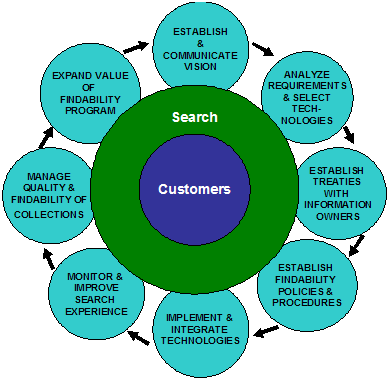Avoiding Search Pitfalls
How to Sidestep and Recover from the Worst Problems
Search projects fail for all the reasons any project fails, but there are a few obstacles that loom especially large for search. Understanding the worst pitfalls of search can help you avoid them—or at least put a name to your current misery. We’ll go further than naming what ails you, and outline a path to sidestep the big mistakes and offer advice on how to escape the holes you’re already in. Our advice is primarily for search project and program leaders. The big problems all belong to you.
SEARCH PROJECTS FAIL PREDICTABLY AND UNUSUALLY
Search projects fail for all the reasons any project fails, but there are a few obstacles that loom especially large for search. Understanding the worst pitfalls of search can help you avoid them—or at least put a name to your current misery. We’ll go further than naming what ails you, and outline a path to sidestep the big mistakes and offer advice on how to escape the holes you’re already in.
Our advice is primarily for search project and program leaders. The big problems all belong to you, and they fall in these areas:
- Vision
- Requirements and Technology Selection
- Findability Policies and Procedures
- Measuring, Communicating, and Investing in Progress
CULTURE SETS THE TERRAIN FOR SEARCH PROBLEMS
Search problems occur across the project lifecycle. Some problems are entirely predictable and mundane, common to all types of projects: project management gone awry, technology instability, failing to reach closure on requirements, etc.
What makes search different from other projects, and sets the stage for the big problems to come, is what amounts to two cultural issues:
- Understanding how to be effective content publishers
- Rapid evolution of search and its uses
We’re not going to suggest that you take on your corporate culture. But you need to understand how culture impacts search success because you’ll be struggling against the cultural tide as long as you are working on findability.
COMPANIES AS CONTENT PUBLISHERS. First, most companies do not understand how to be effective content producers. In fact, most companies don’t believe they are publishers. They think they make diesel engines, software, or chips, or sell fashion or building supplies. However, most companies have publishing operations, just as they have HR, accounting, and logistics operations. But, while people have mental models and role models for HR, accounting and other core competencies, they have little idea how to be a content publisher. Without the habits and structures that support content publishing—and findability—your information collections will not be in tidy shape. In fact, they will be a mess; people won’t find the information they need, and they won’t understand why it’s so hard. What’s far worse than the current mess is the organization’s lack of will to fix it. People do not understand the tasks and roles that must be funded in order to achieve the findability that the organization needs, and, as a result, attempts to secure funding (by people like you, who do understand) will fall on stubbornly deaf ears.
RAPID EVOLUTION OF SEARCH AND ITS USES. The second issue is as much environmental as cultural. Search is an arena undergoing tremendous change. For the past five years, there has been great change in search usage: what people use it for, what questions they expect to answer, what kinds of information they index, what sorts of people use search, what context they use it in. Expectations have risen steadily as search engines have become more competent. I think we are on an event boundary, and search engines are about to blossom into every application you buy. This will have a phenomenal impact on user productivity, but it will also drive expectations and demand. The bottom line is that it is impossible to guess who will use the search service you are building, and what questions they will expect it to answer. Nailing down requirements in this environment becomes extraordinarily difficult: we are like pilgrims in pursuit of the unknowable.
Project and Program Lifecycle Pain Points
Search projects follow a classic lifecycle, as depicted in Illustration 1. But if search projects are to deliver great search, they need to become, or be supported by, search programs. Search projects are like planting grass. Search programs are like getting the grass to grow, keeping it mown, and controlling the weeds. My lifecycle addresses the search program lifecycle, which typically starts with a successful search implementation project. Following the implementation, the search program kicks in, with the ongoing activities of monitoring and managing quality and findability. The concluding step, expanding the program, occurs when your program is successful: your monitoring and analysis indicate what needs to be done, and your metrics prove the worth of doing it.
Search Project and Program Lifecycle

© 2007 Patricia Seybold Group Inc.
Illustration 1. Search projects and programs follow a lifecycle that involves planning, execution, monitoring, and improvement. Most projects tackle a step or two in the lifecycle. Delivering great search really depends on programs that invest in search on an ongoing basis.
In the search project and program lifecycle, there are four phases that we observe to be particularly difficult with search, each with its own problems...
Sign in to download the full article
0 comments
Be the first one to comment.



